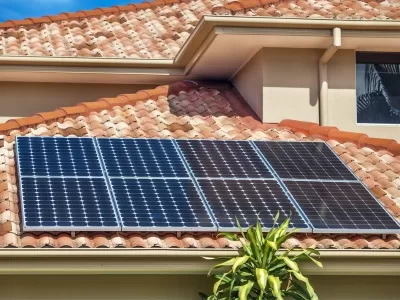Introduction to Residential Solar Panels
Solar energy is an abundant, renewable, and clean source of power that is rapidly gaining popularity among homeowners. Residential solar panels are an efficient and cost-effective way to harness this energy, providing homeowners with energy independence and substantial cost savings. This comprehensive guide will help you understand the benefits, types, and components of residential solar panels, as well as the installation process and maintenance tips.

Benefits of Residential Solar Panels
Energy Independence
One of the main advantages of residential solar panels is energy independence. Solar panels allow homeowners to generate their electricity, reducing reliance on traditional utility companies. This independence can provide peace of mind, knowing that you have control over your energy source and costs.
Environmental Impact
Solar energy is a clean and environmentally friendly source of power. By installing solar panels, you help reduce your carbon footprint and contribute to a more sustainable future. Furthermore, solar energy does not produce harmful emissions or contribute to global warming.
Cost Savings
Residential solar panels can result in significant cost savings over time. While the initial investment may be substantial, the long-term savings in electricity bills can offset the initial cost. Additionally, many governments offer tax credits and incentives to encourage solar panel installation, further reducing the overall cost.
Different Types of Solar Panels
Monocrystalline Solar Panels
Monocrystalline solar panels are made from a single, pure silicon crystal. They are the most efficient type of solar panel, with efficiency rates of around 15-20%. Their uniform, dark appearance and rounded edges make them easily recognizable. However, they are also the most expensive option.
Polycrystalline Solar Panels
Polycrystalline solar panels consist of multiple silicon crystals fused together. They have lower efficiency rates compared to monocrystalline panels, typically ranging from 13-16%. They are less expensive and can be identified by their blue, speckled appearance and square edges.
Thin-Film Solar Panels
Thin-film solar panels are made by depositing a thin layer of photovoltaic material onto a substrate. They have the lowest efficiency rates, ranging from 10-12%, but are the least expensive option. Thin-film panels are lightweight, flexible, and have a uniform appearance. They are ideal for large spaces or areas with less direct sunlight.
Key Components of a Solar Panel System
Solar Panels
Solar panels are the primary component of any solar energy system. They capture sunlight and convert it into direct current (DC) electricity.
Inverter
The inverter actively converts the DC electricity that solar panels generate into AC electricity, which most household appliances use.
Mounting System
A mounting system is used to securely attach solar panels to your roof or other surfaces. It is essential to choose a mounting system that is compatible with your specific type of solar panel and roof material.
Solar Battery Storage
Solar battery storage systems store excess energy generated by your solar panels for later use. This allows you to use solar power during times when your panels are not producing electricity, such as at night or on cloudy days.
Installation Process
Site Assessment
Before installing solar panels, a professional will assess your property to determine the best location and configuration for the system. Factors considered during the assessment include roof orientation, shading, and structural integrity.
System Design
After the site assessment, the custom solar panel system design will cater to your specific energy needs and preferences.
Permitting and Financing
Before installation, necessary permits must be obtained, and financing options should be explored. This may include applying for government incentives or rebates to help offset the cost of the system.
Installation
Professional installers will mount the solar panels, connect the inverter and battery storage system, and ensure that everything is functioning correctly.
Maintenance and Monitoring
Solar panels need little maintenance, but it is advisable to inspect and clean them regularly to ensure they perform at their best. Monitoring systems can help track your solar panel’s efficiency and detect any potential issues.
Frequently Asked Questions (FAQs)
Q1: How much do residential solar panels cost?
The cost of residential solar panels varies depending on the type, size, and installation complexity. On average, the cost ranges from $15,000 to $25,000 before incentives and rebates.
Q2: How long do solar panels last?
Solar panels typically have a lifespan of 25-30 years, although their efficiency may decrease over time.
Q3: Can I install solar panels myself?
Although you can technically install solar panels on your own, we strongly advise you to hire a professional installer to ensure proper installation, safety, and compliance with local regulations.
Q4: What happens if there’s a power outage?
If you have a solar battery storage system, you can still use your stored solar energy during a power outage. Otherwise, your solar panels will not function, as they are typically connected to the grid for safety reasons.
Q5: Can solar panels work on cloudy days?
Yes, solar panels can still generate electricity on cloudy days, but their efficiency will be lower compared to sunny days.